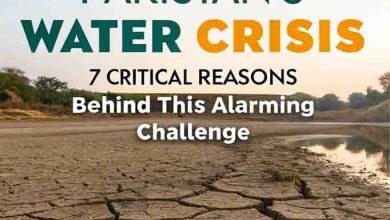#Pakistan’s #floods highlight the #climate-health nexus
Author: Jeremy Youde, University of Minnesota Duluth
The devastating 2022 floods in Pakistan highlight the interplay between natural disasters, #ClimateChange and population health. Months after the flooding ended, as many as 8 million people still live near contaminated #flood #waters, prolonging their exposure to potential pathogens.
Between June and October 2022, more than 10 per cent of the country flooded. Over 1700 people died, nearly 12,000 were injured and more than 2 million were left homeless. The damages and economic losses caused by the floods total more than US$30 billion.
A combination of factors created the conditions for such extreme flooding in #Pakistan. The British Red Cross estimates that the 2022 summer #monsoon #rainfall was three times higher than the 30-year average. Increased surface temperatures led to extreme heat waves, which caused Pakistan’s glaciers to melt earlier and in a larger volume. Deforestation has removed the plant life that stabilises soil, meaning that the ground is less able to absorb the water.
While climate change heightens Pakistan’s vulnerability to such weather events, the flooding is not simply a story about climate change.
Natural disasters impact population health in several ways. The floods have already caused significant increases in infectious diseases like malaria, cholera, dengue and fungal skin infections. They have wiped out water and sanitation systems, raising the likelihood that Pakistanis will come in contact with infected water supplies. The presence of so much standing water expands the breeding opportunities for mosquitoes, increasing the chances of contracting #malaria.
A doctor working in Hyderabad, one of the cities most affected by flooding, estimates that more than 80 per cent of the patients she sees are sick with #malaria, skin rashes or #diarrhoea as a direct result of living near or having to use polluted water supplies. Between June and November 2022, the 32 #flood-affected districts reported more than 540,000 malaria cases — just months after the country stated that it had halved the rates of malaria between 2015 and 2020.
Children and other marginalised groups are particularly vulnerable to water-borne and other infectious diseases, which will take years to combat.
Flooding has reduced access to health services. The World Health Organization (WHO) reported in October 2022 that 10 per cent of Pakistan’s healthcare facilities had been damaged or destroyed by the flooding. The loss of the facilities means that essential medical supplies and equipment have been destroyed. In a country where half the population already lacked access to primary healthcare services, the loss of more than 2000 healthcare centres and hospitals compounds the public health problems.
Flooding also interrupts existing efforts to address health problems. Pakistan is one of the few countries where polio continues to circulate and there have been intensive efforts to vaccinate children against the disease. Vaccinators have adapted their work to provide medical support and minimise disruptions to polio vaccination in flood-affected areas. But the lack of healthcare facilities and displacement of so many people significantly heightens the chances of the disease spreading and reduces the ability of vaccinators to reach unvaccinated communities. The WHO has raised the alarm about the long-term consequences of the interruptions of these vital public health programs.
The global community is poorly equipped to respond to this sort of emergency right now. #Cholera — a disease spread through contact with infected water and untreated sewage — is on the rise in Pakistan. Yet the WHO announced in October that it must temporarily replace its standard two-dose cholera vaccination regimen with a single dose due to shortages and an increased number of cholera outbreaks worldwide.
Pakistan’s experience is not unique. Natural disasters frequently cause significant population health challenges — both short-term and long-term. Natural disasters can increase the spread of infectious diseases, decrease access to healthcare services and make even relatively minor health issues more dangerous in the immediate aftermath and for years to come as has been seen in Puerto Rico in 2017 after Hurricanes Irma and Maria.
Pakistan’s experience also highlights the relationship between climate change and human health. As climate change increases the number, scope and scale of natural disasters, it threatens the health of an ever-increasing number of people. Climate change expands the areas in which malaria mosquitoes and cholera bacteria can live, putting more people at risk of infection.
The global community should take two key lessons away from the flooding in Pakistan.
First, given that climate change and global health are directly related, neither problem can be addressed in isolation. Policymaking needs to take a holistic approach that recognises the link between environmental and human health.
Second, rebuilding Pakistan will be a long-term project — and the global community must be willing to engage with the Pakistani government. The flood waters will eventually recede, but it will take even longer to rebuild the systems necessary to protect the health of the Pakistani people.
Jeremy Youde is Dean of the College of Arts, Humanities, and Social Sciences at the University of Minnesota Duluth.







